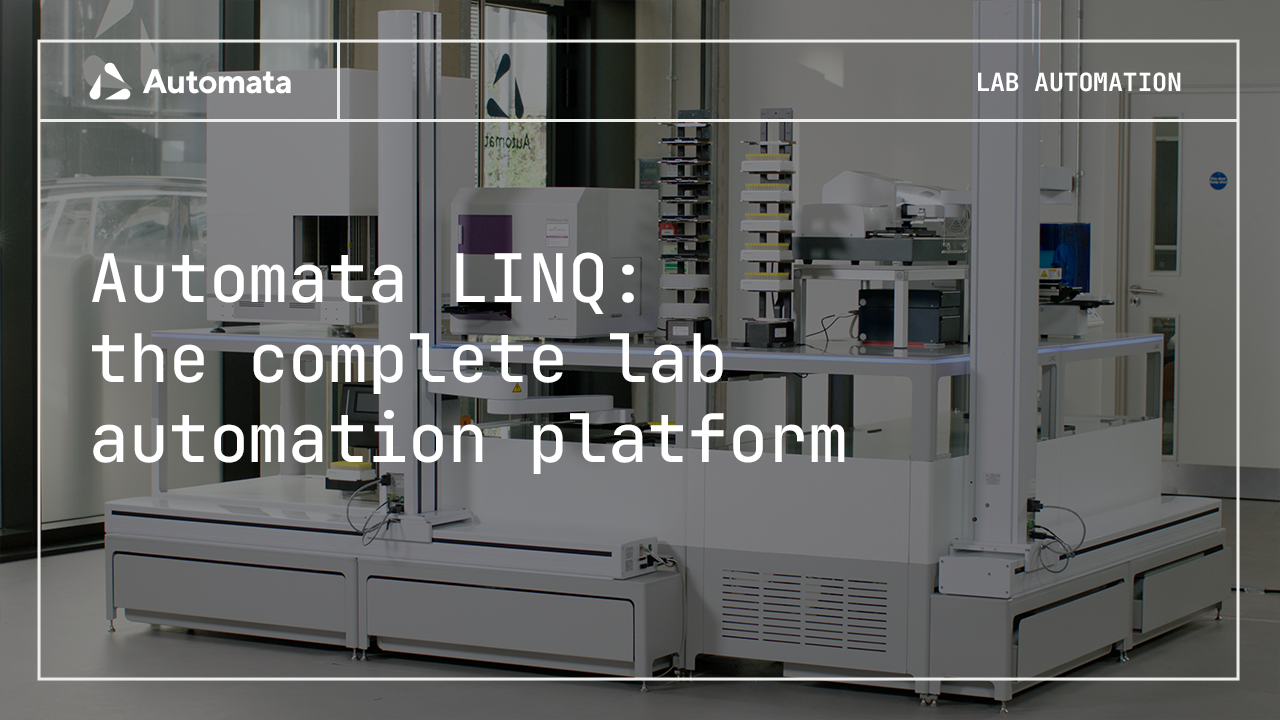Five challenges in lab automation and how to overcome them

Lab automation is transforming the life sciences by enabling faster, more accurate results and allowing researchers to focus on higher-level tasks. However, implementing lab automation comes with challenges that can hinder its success.
From ensuring interoperability with existing systems to managing costs and data accuracy, labs must navigate these obstacles to fully benefit from automation.
In this blog, we explore the top five challenges in lab automation and provide practical solutions to overcome them.
Interoperability with existing systems
One of the most significant challenges labs face when implementing lab automation is ensuring interoperability between new automation and existing systems. Many laboratories rely on established workflows and legacy systems that may not be immediately compatible with the latest automation technologies. This lack of interoperability can disrupt workflows, cause data inconsistencies, and lead to increased costs.
How to overcome it
To tackle interoperability challenges, it’s crucial to choose lab automation solutions that are flexible and easily integrated with your existing systems. Look for cloud-first automation with open APIs (Application Programming Interfaces) that support standard data formats, enabling seamless communication between new and old systems. Collaborating with vendors who offer comprehensive support during the integration process can also help ensure smooth transitions and minimal disruptions.
Ensuring data accuracy and integrity
Data accuracy and integrity are vital in scientific research, and automation introduces new complexities in this area. Automated systems can generate vast amounts of data rapidly, but if the data is inaccurate or poorly managed, it can lead to flawed results and conclusions. Ensuring that data remains secure and unaltered during automated processes is crucial for maintaining scientific integrity.
How to overcome it
Implement robust data management practices within your lab automation workflows, including regular validation and verification steps. Utilise lab automation software that offers real-time monitoring and alert systems to detect anomalies. Built-in error-handling capabilities are a must. Establish strict access controls and audit trails to safeguard data integrity and ensure that all data changes are tracked and recorded.
Managing costs
While lab automation can lead to long-term cost savings by increasing efficiency and reducing labour costs, the initial investment can be significant. Labs may be hesitant to adopt automation technologies due to concerns about the upfront costs of purchasing new systems and training personnel.
How to overcome it
To manage costs effectively, start with a thorough cost-benefit analysis to identify areas where lab automation will have the most impact. Focus on automating high-throughput, repetitive tasks that yield immediate efficiency gains and cost savings. Consider a phased implementation approach, gradually introducing automation across different workflows to manage budgets better and assess ROI (Return on Investment) at each stage.
Training and workforce adaptation
Introducing lab automation can be met with resistance from staff unfamiliar with the new system or concerned about its impact on their roles. Ensuring that the workforce is adequately trained and confident in using new systems is crucial for successful adoption.
How to overcome it
Invest in comprehensive training programs that teach staff how to use the new automation software and emphasize its benefits. Highlight how lab automation can enhance their roles by allowing them to focus on more complex and rewarding tasks. Foster a culture of continuous learning and provide ongoing support as staff adapt to new technologies. Involving employees in the planning and implementation process can also increase buy-in and reduce resistance.
Maintaining flexibility in a rapidly evolving field
The life sciences field is continuously evolving, with new discoveries, technologies, and regulations emerging regularly. Implementing lab automation solutions that are too rigid or narrowly focused can limit a lab’s ability to adapt to these changes, potentially rendering the technology obsolete within a few years.
How to overcome it
Choose lab automation platforms that are scalable and adaptable, allowing your lab to modify workflows and processes as needed. Opt for modular automation software that can be easily upgraded or expanded to incorporate new technologies or accommodate changes in research focus. Staying informed about industry trends and maintaining strong relationships with technology vendors can also help ensure that your lab remains at the forefront of innovation and can quickly adapt to new developments.
Lab automation offers numerous benefits, but it also presents challenges that must be carefully managed for successful implementation. By addressing interoperability issues, ensuring data accuracy, managing costs, providing thorough training, and maintaining flexibility, labs can overcome these challenges and fully realize the potential of lab automation. As lab automation continues to advance, those labs that successfully navigate these hurdles will be well-positioned to lead in scientific discovery and innovation.
A new kind of automation is tackling these issues
Meet LINQ, the vendor-agnostic, adaptable, error-handling, AI-ready data generating, workflow automation platform.

LINQ is composed of two parts – LINQ Bench and LINQ Cloud.
With a customisable configuration, LINQ Bench is designed to fit into any laboratory and accommodate the majority of machinery. Its modular design means that the individual components of the system can be adapted as and when required and control is possible at a local workcell and total workflow level.
LINQ Cloud features workflow building, simulation, validation, execution and control. Workflows can be fully customised with a user-friendly interface, API or SKD, and cloud-based access ensures control over the platform from anywhere in the world. LINQ Cloud also facilitates real time data transfer of fully contextualised workflow results, delivered to a data lake of your choice in an AI-ready format.
The utilisation of LINQ enabled one lab to reduce manual interaction time by 95%, while another increased its throughput by condensing a 6-hour cell culture process into just 70 minutes.
To hear more about what makes LINQ a different kind of automation platform, get in touch with the team today.

